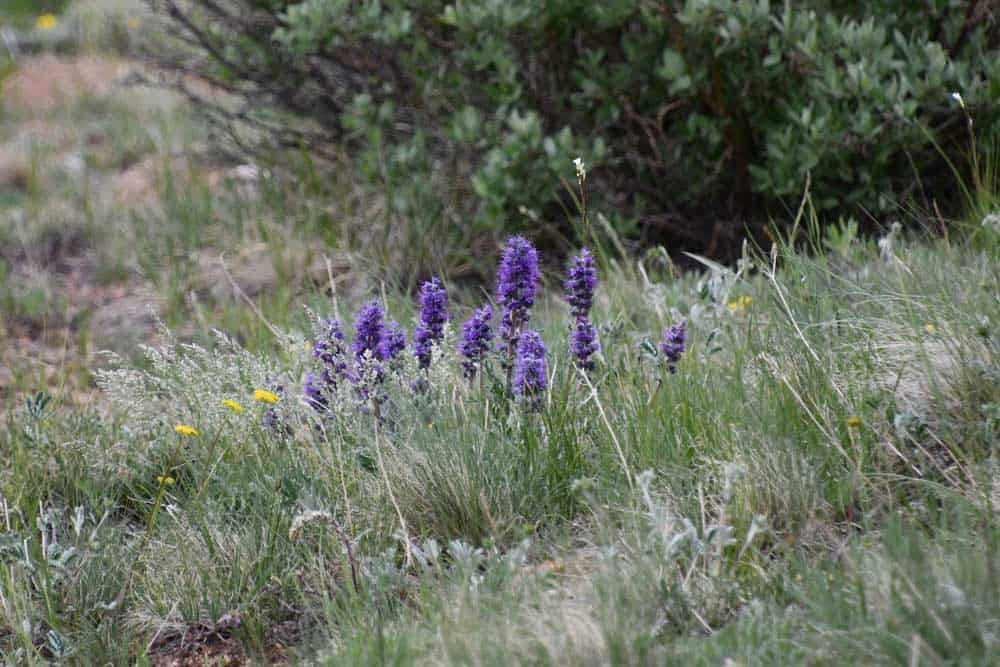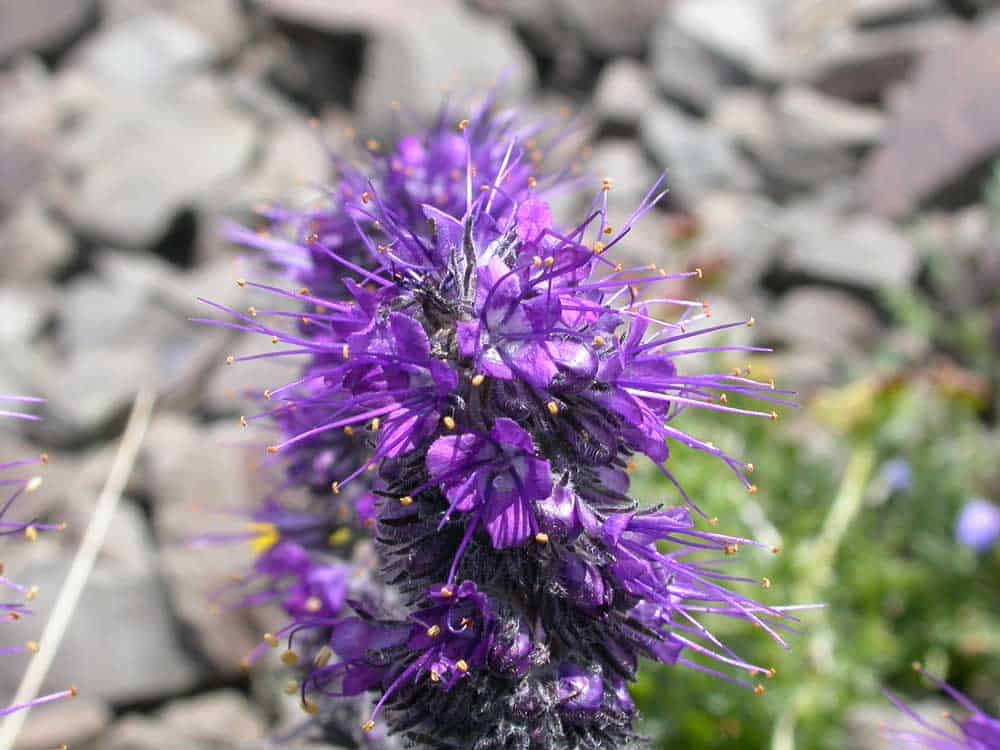Alpine Beauty with Ecological Impact
Phacelia sericea, commonly known as Silky Phacelia or Blue Alpine Phacelia, is a striking perennial native to western North America that offers both aesthetic appeal and ecological benefits for native plant gardens. This low-maintenance plant attracts a variety of pollinators and supports local biodiversity, making it a valuable addition to gardens focused on ecological health and beauty.

Gardening Uses and Benefits
Silky Phacelia offers multiple benefits for native plant gardens, making it an excellent choice for eco-conscious gardeners. Its deep blue to purple flowers with prominent yellow anthers create a visually stunning display, particularly in rockeries or alpine gardens. This hardy perennial thrives in well-drained, sandy soils and requires minimal care, reducing maintenance efforts. The dense foliage of Phacelia sericea helps suppress weeds, minimizing the need for chemical herbicides. Additionally, its nectar-rich flowers attract a variety of pollinators, enhancing garden biodiversity and supporting local ecosystems.
Interesting Facts about Phacelia sericea
Named for its distinctive silvery appearance, Phacelia sericea is covered in silky hairs that give it a unique texture and sheen. This resilient plant is adapted to thrive in challenging environments, often found growing above the treeline in rocky, alpine terrains. Its cylindrical flower clusters feature long, protruding stamens, creating a fuzzy, fringed appearance that sets it apart from other species. Native to western North America, this perennial can be found from Alaska to California, thriving at elevations up to 8,500 feet. The plant’s ability to grow in loose talus slopes makes it an excellent choice for stabilizing soil in rocky garden areas.

Specialist Relationships with Invertebrates
Silky Phacelia forms crucial relationships with various invertebrates, enhancing biodiversity in native gardens. Green metallic sweat bees (Agapostemon spp.) are frequent visitors, relying on its nectar and pollen. The plant also attracts hoverflies and parasitic wasps, which feed on its nectar and subsequently help control pest populations in nearby vegetable gardens. Certain butterfly species, such as the endangered Mission blue butterfly, utilize Phacelia sericea as a food source, contributing to their conservation efforts. These specialist relationships make the plant an invaluable addition to gardens focused on supporting local ecosystems and promoting biodiversity.
Ecosystem Contributions
Contributing significantly to ecosystem health, this alpine perennial plays a crucial role in soil stabilization through its robust root system, preventing erosion in rocky habitats. The plant’s ability to accumulate nutrients in its foliage and roots enhances soil fertility upon decomposition, supporting the growth of surrounding vegetation. By providing essential habitat and food resources for a diverse array of pollinators and beneficial insects, Phacelia sericea acts as a keystone species in maintaining local biodiversity. Its presence in native plant gardens creates a microcosm of alpine ecosystems, offering a unique opportunity for urban and suburban areas to support specialized high-elevation flora and fauna.
Header image: “Guanella Pass | 21.06.21 | 8523 Phacelia sericea (Silky sericea)” by Kaemat is licensed under CC BY-SA 2.0.
